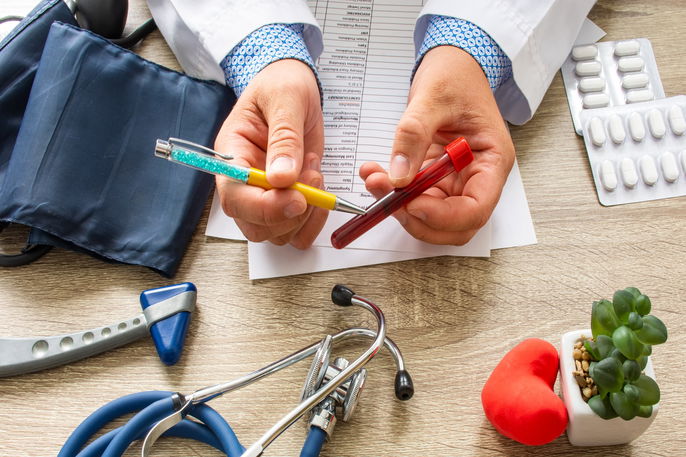The main anemia symptoms are frequent fatigue, pale skin, low mood, constant headache, brittle nails, dizziness and loss of appetite.
Signs and symptoms of anemia are related to low hemoglobin levels in the blood. Hemoglobin is a component of red blood cells that is responsible for transporting oxygen to the rest of the body. Low levels can happen with a low iron diet, changes to how iron is absorbed, or with a very heavy period.
It is important to consult a doctor if you notice anemia symptoms so that your doctor can identify the underlying cause and treat as appropraite. The doctor may recommend diet changes and/or iron supplementation.

What are the symptoms of anemia?
The most common symptoms of anemia are:
- Frequent fatigue
- Pale skin, pale gums and pale inner eyelids
- Decreased overall mood
- Constant headache
- Brittle hair and nails
- Loss of appetite
- Memory problems or difficulty concentrating
- Urge to eat non-edible things, like bricks or dirt
- Dizziness
- Changes to heart rate, in some cases
If you notice signs or symptoms of anemia, you should see a doctor for blood work and assessment. If confirmed the doctor will initiate treatment.
Symptoms quiz
If you suspect you may have anemia, enter your symptoms below to assess your risk:
This symptoms checker is just a tool, and is not able to diagnose anemia. This quiz does not replace an assessment with a doctor.
Anemia diagnosis
To confirm the presence of anemia, bloodwork should be ordered to assess hemoglobin. The doctor may also order additional testing to check iron, vitamin b12 and folic acid levels, as well as tests that assess liver and kidney function.
Normal hemoglobin levels vary depending on age and life stage. Anemia is typically diagnosed when hemoglobin levels are less than 115g/L in adult women and less than 135 g/L in men. Pregnant women should have a hemoglobin of at least 110 g/L.
Learn about other anemia blood tests that you doctor may order to confirm a diagnosis.
Treatment options
Treatment for anemia normally involves increasing iron intake through diet. Foods like red meat, beans and beats, for example, are high-iron foods. Doctors may also recommend iron supplements or even a blood transfusion, for more severe cases.
1. What to eat
To treat anemia, it is important to eat plenty of foods with iron, like red meat, organ meat, chicken, fish, seafood, spinach, broccoli and seeds. Learn more about iron-rich foods to incorporate into your diet.
You should also try to eat these iron sources with a vitamin C source, like cashews, cherries, pineapple and guava. Vitamin C foods help to increase iron absorption in the body.
Also recommended: Foods for Anemia: What to Eat & Avoid (plus a 3-Day Meal Plan) tuasaude.com/en/foods-for-anemia2. Iron supplementation
To treat moderate to severe anemia, the doctor may recommend iron supplements, like ferrous sulfate, ferrous gluconate or ferrous hydroxide:
- Children under 5: 3 mg of iron per kilo of body weight, for 3 months
- Adults: 120 mg of iron per day, for 3 months
- Pregnant women: 60 mg of iron, twice per day, until hemoglobin levels have normalized
To optimize iron absorption, you should take your iron supplement with lunch or dinner, and ideally with a citrus fruit, like oranges, lemons or tangerines. Learn about other anemia medications that you doctor may also consider prescribing to treat this condition.






























